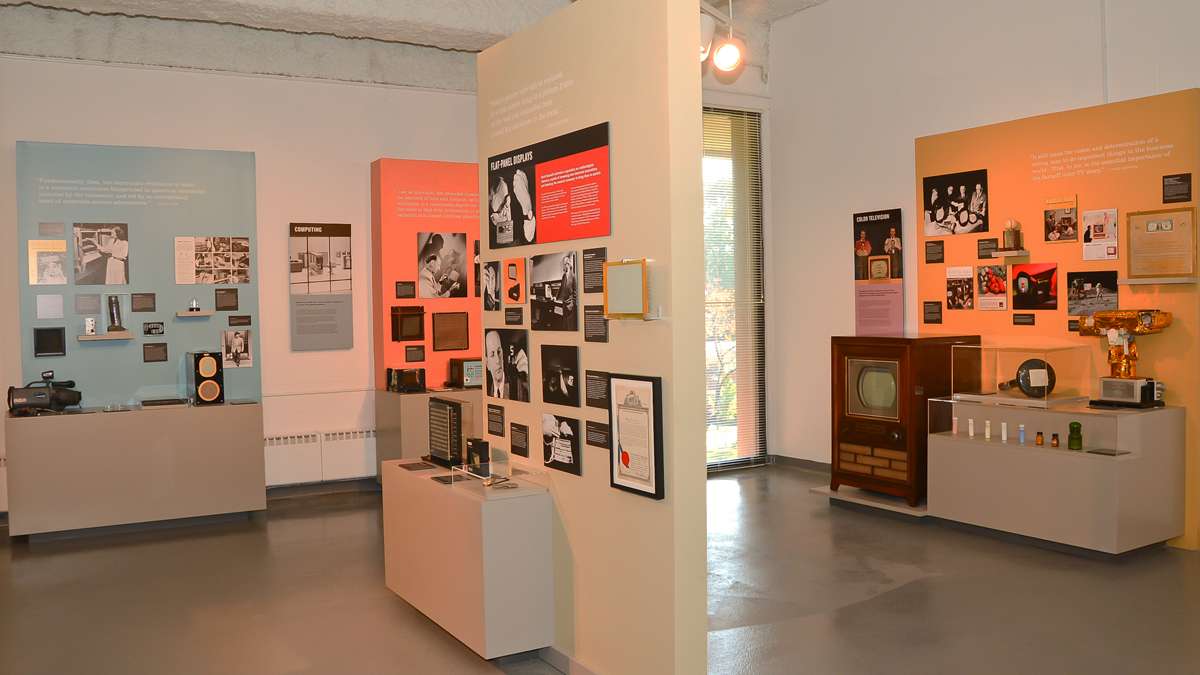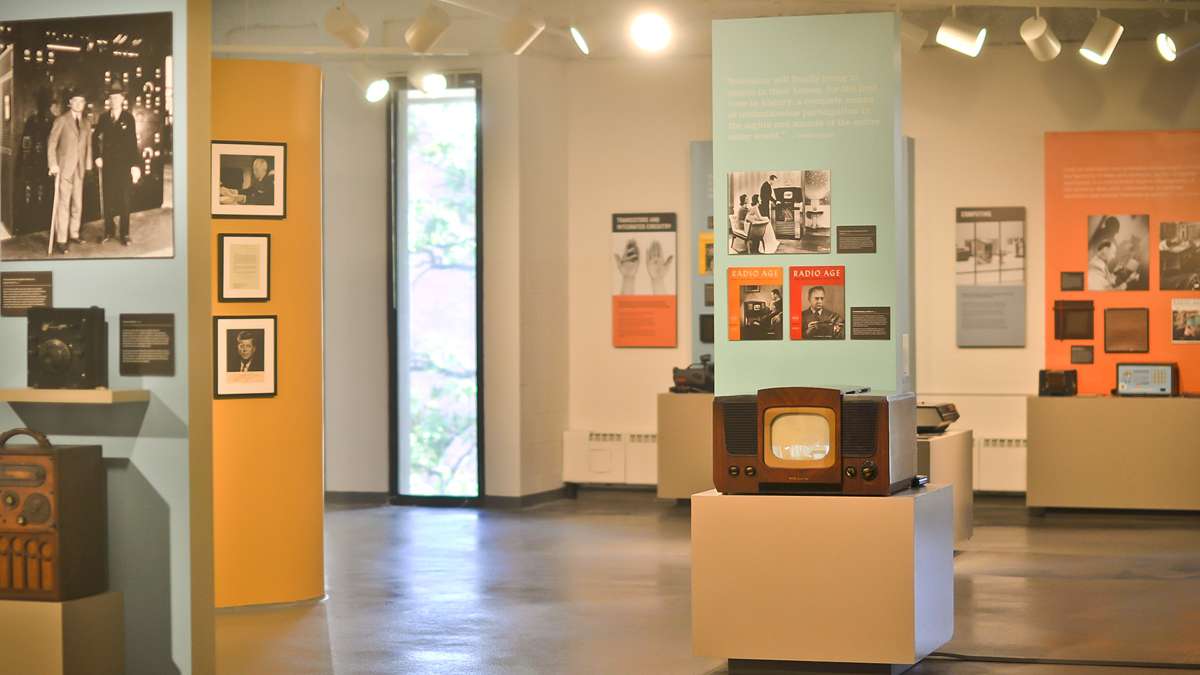New Jersey was the ‘Silicon Valley’ of electronics
-

-

-

-

The Sarnoff Collection at the College of New Jersey opened last October. (Photo courtesy of Jessi Franko, file)
-

-

There was a time, not too long ago, when men dreamed of broadcasting music, news, sports, and even lectures over the airwaves. Many scientists and business leaders were involved in developing radio, but one man had the vision and business skills to bring them to fruition: David Sarnoff is often credited as the inventor.
He didn’t stop with radio. The phonograph, black-and-white and color television, electron microscopy, computing, integrated circuits, home video, and flat panel displays – all got their start right here in central New Jersey at the Radio Corporation of America (RCA).
Visitors can explore everything from the golden days of radio to the roots of modern technology in the newly opened Sarnoff Library on the campus of The College of New Jersey. Innovations that Changed the World traces the history of telecommunications through more than 80 artifacts from the Sarnoff Collection, as well as dozens of vintage photographs, letters, and advertisements. There is correspondence between David Sarnoff and Presidents Roosevelt, Eisenhower, Truman and Kennedy, as well as films and recordings of Sarnoff’s speeches.
Greeting visitors to the library’s new home in Roscoe West Hall is Nipper, the iconic head-cocking dog looking into a Victrola — the symbol associated with RCA-Victor.
Nipper had a fondness for listening to music, according to legend, and was doing just that when artist Francis Barraud captured the scene on canvas in 1899 in “His Master’s Voice.”
Eldridge Johnson, the founder of Victor Talking Machine in Camden, had a revelation when he saw that painting – it could become a symbol of how his machine was so good, even a dog couldn’t tell the difference between a recording and his master’s voice. An astute businessman, Johnson launched Nipper’s image and company name world-wide by branding everything from Victrolas and recordings to salt and pepper shakers. (In 1929, RCA purchased Victor to become RCA Victor.)
The Sarnoff collection includes many objects with the beloved animal’s likeness, including a hand-hooked rug, a stained glass window, even a Nipper necktie.
“These are the secret gems of electronic history,” said Curator Benjamin Gross of the Chemical Heritage Foundation, walking through a large room filled with artifacts from the pioneering days of radio and television. “It’s a treasure house of materials from the dawn of the 20th century.” Gross couldn’t be more suited to the job – he wrote his dissertation on the development of the first liquid crystal displays by scientists and engineers at RCA.
A NEW HOME
The David Sarnoff Library was previously on U.S. Route 1 in West Windsor – where Gross did his doctoral research — before being donated to TCNJ in 2010. The main research lab was established in the Princeton area in 1942, halfway between the factory in Camden and the headquarters in Harrison. David Sarnoff, chairman, spent time here with his research staff. In 1951 the facility was renamed the David Sarnoff Research Center. When Sarnoff retired, he set up the library dedicated to his career. It opened in 1967, the 25th anniversary of the lab building.
In the beginning it was much like a presidential library, tracing the life and career of the chairman, but it evolved to become more about the history of electronics. The collection grew organically, including such objects as the key to Tokyo presented to Sarnoff and a calligraphic certificate by the Institute for Electrical Communication. In 2009, SRI took over the company and was not interested in maintaining the library, so the David Sarnoff Library and Museum became its own non-profit corporation with a board of trustees.
“Our goal is to introduce people to the breadth of technologies and to place it in a broader social, political, economic and cultural context,” says Gross. “The objects on their own are wonderful but they fit into broader history of American science and business.”
According to his New York Times obituary, Sarnoff was neither scientist nor inventor, but a man of astounding vision. A technical autodidact, he developed a close rapport with the scientists, engineers, research staff and executives, distinguishing him from other business leaders of the time. He had electronic engineers who knew how to translate a video signal and transmit it over the air, using chemistry to develop phosphorus so the resulting image appeared bright and sharp. It was Vladimir Zworykin who developed the first picture tube.
AT&T, GE and RCA were all working on television, but Sarnoff is credited with putting together a comprehensive system to broadcast and receive TV signals, using cameras and picture tubes. At the 1939 World’s Fair, Sarnoff announced that RCA was the first company to broadcast television via its affiliate, NBC.
The exhibition includes a vintage home entertainment center with television, radio and a record player – all with the Nipper trademark – in a carved mahogany cabinet with speaker housing.
From television, Zworykin and RCA went on to pioneer the first electron microscope. Scientists scanning specimens with electrons could get higher resolution than with an optical microscope, using electrical fields to control the beam.
“Before Silicon Valley, New Jersey was the hot bed of innovation in the U.S.,” said Gross. “The first LCDs were developed at RCA. These artifacts show how RCA was on the cutting edge, leading the way.”
__________________________________________________
The Artful Blogger is written by Ilene Dube and offers a look inside the art world of the greater Princeton area. Ilene Dube is an award-winning arts writer and editor, as well as an artist, curator and activist for the arts.
WHYY is your source for fact-based, in-depth journalism and information. As a nonprofit organization, we rely on financial support from readers like you. Please give today.





